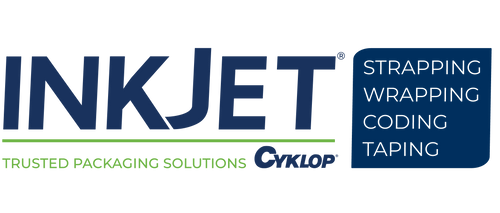Is a Laser Date Coder Right for You?
Although laser marking technology has existed for some time, it’s only in the past couple of decades that these systems have become widely popular in manufacturing and packaging spaces.
CO2 and fiber laser systems—two of today’s most popular laser date coding options—were first invented in the mid-1960s. In the decades that followed, various engineers and scientists improved both forms of laser marking technology by expanding application possibilities and improving their hardware design. By the 1990s and 2000s, both CO2 and fiber laser systems were accessible enough to find popularity in several high-speed coding environments such as:
- Industrial bottling lines
- Food packaging facilities
- Pharmaceutical packaging plants
- Aerospace manufacturing plants
In these environments and others, laser systems benefit users by providing them with high-speed coding capabilities, reliable accuracy, and highly-legible codes. However, these benefits do come at a cost, as laser coders require substantial upfront investments and many facility accommodations. Consequently, it can be difficult for companies to determine whether a laser date coder is the right choice for their marking needs or if a traditional inkjet printer would be a better fit.
If you’ve been wondering whether a laser system is right for your operation, consider these questions to help determine whether this technology is right for you.
How Many Products Do You Need To Mark per Day?
One of the biggest appeals of laser coding systems is their ability to mark substrates moving at high speeds. For example, InkJet, Inc.’s CO2 laser series offers marking speeds up to 2,000 characters per second. With these speed capabilities, businesses involved in large-scale packaging and manufacturing can make sure that all of their products are marked with the necessary text and codes to comply with traceability standards and state/federal regulations.
Of course, not all organizations require the marking speeds offered by laser date coders. In fact, laser systems only really become valuable when one is producing tens of thousands of products per day. If you don’t require top-level speed from your coding line, we recommend looking into more cost-effective options like thermal inkjet printers.
Do You Have the Budget Necessary To Invest in Laser Marking Technology?
Today’s laser date coders lead the industrial coding world when it comes to marking speeds and consistent code results. However, these benefits do come at a price. To be more specific, this price comes in the form of an upfront investment ranging from $15,000-$35,000—a figure substantially higher than many continuous inkjet and thermal inkjet printer models.
Even though laser date coders are relatively expensive upfront, they do have fewer ongoing costs than other industrial marking machines. Continuous inkjet printers, for instance, require:
- More Frequent Maintenance: CIJ printers must be serviced at least once a year; companies like InkJet, Inc. have programs for self-service as well as professionally. While laser systems require preventative maintenance, if they are maintained properly, they can last far longer without professional intervention
- Regular Filter Changes: To keep a CIJ operating properly, one must replace their unit’s filter on a regular basis. Although laser systems also use filters in light duty entry-level models and their fume extractors, they don’t require as frequent changes as CIJ printers.
- Printing Consumables: At the risk of stating the obvious, continuous inkjet printers can’t print without ink and makeup. Whereas CIJ users constantly need to have printing consumables on hand, laser operators often don’t have to worry about any consumables apart from electricity.
Over time these factors can make a laser coding machine more cost-effective than a CIJ. That said, only organizations that mark a very large amount of products will end up seeing that result.
Can Your Facility Accommodate the Requirements of a Laser Date Coder System?
Generally speaking, laser coding systems aren’t much larger than continuous inkjet printers and are considerably lighter in weight. As such, operators often find it easy to find space on their production lines in which to fit them in. While the physical size of the laser unit itself doesn’t generally cause spacial issues, other parts of the unit can be more complicated.
By nature, laser systems emit radiation and exhaust fumes that can prove hazardous to one’s health. To ensure worker safety, laser marking solutions come with a few components that eliminate these health risks. The two most important components are:
- A beam shield, which protects people and the environment from direct and indirect radiation.
- A fume extractor, which takes all hazardous fumes emitted in the marking area, filters, and expels them in a safe place.
Beam shields can be bulky, but they can often be successfully installed onto production lines with minimal issues. Fume extractors, on the other hand, are more complicated. To successfully use a fume extractor, one either needs to connect the extractor to an existing duct system or invest in a new filtration system. Both of these options can be very expensive, and if one doesn’t have the necessary space in their facility, can even prove to be impossible to install.
Consequently, we stress that you speak to an expert, like at InkJet, Inc., to ensure that your facility is compatible with a laser marking system before deciding on this marking method.
Searching for a Laser Date Coder? InkJet, Inc. Can Help You Find the Best Model for Your Business
Even though laser date coders offer many advantages, they aren’t perfect for every organization. That’s why at InkJet, Inc. we carry a vast array of marking technologies in addition to industrial laser systems.
From CO2 and fiber laser systems to high-speed continuous inkjet printers and handheld thermal inkjet models, our product line is diverse enough to satisfy the needs of large industrial plants and small startups alike. Call us today to learn more about our various product offerings.
To learn more about laser date coders and other industrial coding technologies, contact us online today or call 1(800) 280-3245.



